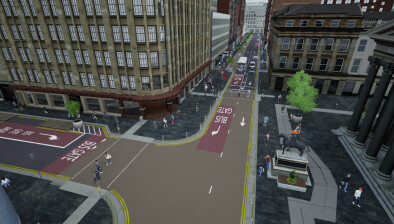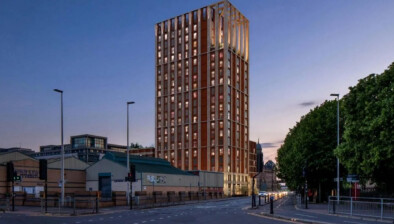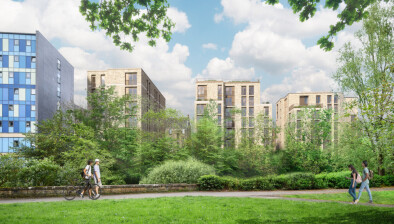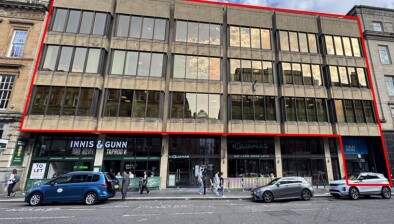Glasgow’s Connecting Woodside project advances safer travel on St George’s Road
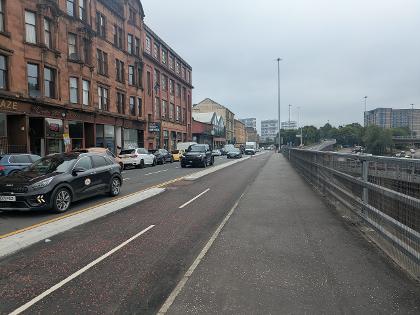
Progress has been made on St George’s Road as part of the transformative Connecting Woodside initiative, which is reshaping the area into a safer, more inclusive space for walking, wheeling, and cycling.
The latest phase of work, which began in Spring, includes the construction of a two-way cycle lane along the south-eastern side of St George’s Road, with the protected route now connecting Charing Cross to the Quietway route on West Princes Street via a signalised cycle crossing.
The cycle lane will ultimately extend to Garscube Road, where it will connect with existing routes leading to the Forth and Clyde Canal and Glasgow city centre - forming a vital link in the city’s growing active travel network.
On the opposite side of St George’s Road, marked parking bays have been introduced alongside dedicated loading facilities and disabled parking spaces, with enforcement of these new arrangements to be activated shortly once signage has been installed.
Safety improvements have also been made at Carnarvon Street, where footway buildouts have been completed to reduce vehicle turning speeds, and the junction has been raised to provide step-free crossings for pedestrians. Similar upgrades are imminent for the junction at Grant Street.
Further enhancements on this section of St George’s Road include the completed upgrade of the pedestrian crossing at the M8 slip road exit, offering a safer and more welcoming route for those travelling on foot or by bike. Construction is currently underway on a new pedestrian crossing over the slip road from St George’s Road to Great Western Road, as well as a dedicated cycle-only crossing over Maryhill Road and Phoenix Road.
In the coming months, work will continue along St George’s Road, with modifications to vehicle access points at Clarendon Place and Glenfarg Street to improve road safety. Additional enhancements will include improved drainage, upgraded streetlighting between Maryhill Road and Garscube Road, and the planting of street trees to green the area and complement new landscaping.
Prior to this phase of work, the junction at Charing Cross was redesigned to improve safety and accessibility for pedestrians and cyclists. This included linking the cycle lane on Sauchiehall Street with the new infrastructure on St George’s Road.
Connecting Woodside is creating a network of segregated cycle ways and Quietways, with improvements to public spaces that provide alternative routes to busy main streets.
The project complements other active travel initiatives in the area and helps connect local neighbourhoods with Sauchiehall Street, the Forth and Clyde Canal and regeneration areas in north Glasgow.
The work on St George’s Road will be undertaken in seven stages:
1. Charing Cross (complete)
2. St George’s Road at St George’s Studios (substantially complete)
3. St George’s Road at West Princes Street (works ongoing at Phoenix Road/St George’s Road/Maryhill Road junction)
4. St George’s Road at St George’s Place
5. St George’s Road at Woodside Library
6. St George’s Road at St George’s in the Fields
7. Clarendon Place (works commenced to create the new access/egress point at Maryhill Road)
Earlier work on the Connecting Woodside project delivered a two-way segregated cycle way on Garscube Road, between Dobbies Loan and Firhill Road - whilst a junction upgrade at North Woodside Road and Maryhill Road now means it is easier for people to walk, wheel and cycle in the vicinity.
Connecting Woodside is funded by the Scottish Government, through Sustrans Scotland’s, Places for Everyone programme and contributions from the council’s active travel budget.











